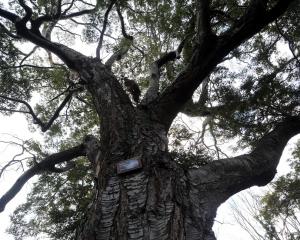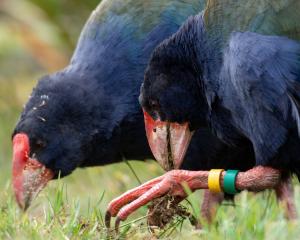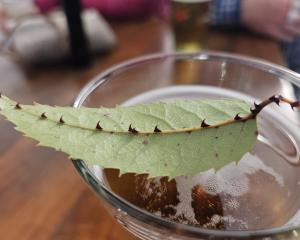
Aotearoa-New Zealand’s biodiversity attracts the attention of biologists worldwide for a number of reasons. Our plants and animals are special, in part because some groups seem to have gone mad and we have far more species than anywhere else in the world. (It is also true, of course, that we are — or were — completely missing groups common overseas: think snakes, rodents, oaks, for example.)
One such "mad" group are New Zealand’s tiny landsnails, almost all of which are confined to native bush. They are found under rotting logs and in the leaf litter on the floor of the forest, eating decaying vegetation and fungi. Most species are members of two scientific families, the Charopidae and the Punctidae. They really are tiny: none measures more than 1cm across and some are less than 2mm when fully grown.
The number of species is truly extraordinary: nearly 400 species in the Charopidae (of which more than 150 are yet to receive scientific names) and about 350 in the Punctidae (of which fewer than 100 have been named), a total of more than 750!
The huge number of un-named species is a problem. Very few New Zealand scientists work on our landsnails and even fewer are engaged in the challenging work of naming them. This dearth of naming scientists is an example of the "taxonomy crisis’’.

All but two or three species are found nowhere else in the world; biologists say such species are "endemic". Indeed, most of our minute landsnail species are endemic to a small part of the country; just Otago and Southland, for example, or only the small area between Cape Maria van Diemen and North Cape in the far north. Often closely related species occur in different parts of the country, probably the result of different species diverging over evolutionary time in these different places.
A single patch of bush can harbour lots of species. One study near Waitomo in the central North Island found nearly 60 species belonging to these two families. Again, this is a remarkable number on a world scale. In Europe, for example, a single locality is likely to have fewer than 20 species, and that figure is across all landsnail families. Some Australian rainforests can yield up to 30 species, total.
Many of New Zealand’s minute landsnails are remarkably beautiful, although it would take a good magnifying glass or (better) a dissecting microscope to show this clearly. The shells can be wonderfully sculptured with delicate ribs. In some species, these ribs are decorated with hair-like tufts. Other species have smooth, glossy shells, and many are coloured with dull-red spots, flashes or bands on a yellow-brown or dark-brown background. Some species have tall shells, with many whorls; others are flatter, and some even have the mouth embellished with shelly plates (so-called "teeth", although these teeth cannot bite).
Perhaps the most extraordinary species, though, is Cavellia marsupialis, endemic to the Nelson-Marlborough region. The adult is just 3mm across and its strongly ribbed, yellowish-brown shell with reddish zigzag streaks has a deep hollow underneath directly below the spire. This cavity, called the "umbilicus", houses its young: up to five developing embryos can be found in one adult’s umbilicus. This snail carries its young around, as if it were a landsnail marsupial (think koalas, possums and kangaroos)!
Hamish G. Spencer is Sesquicentennial Distinguished Professor in the University of Otago Department of Zoology.












